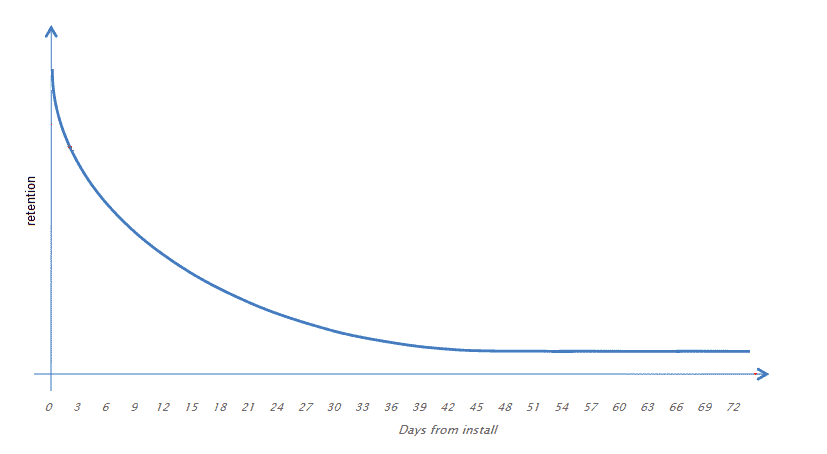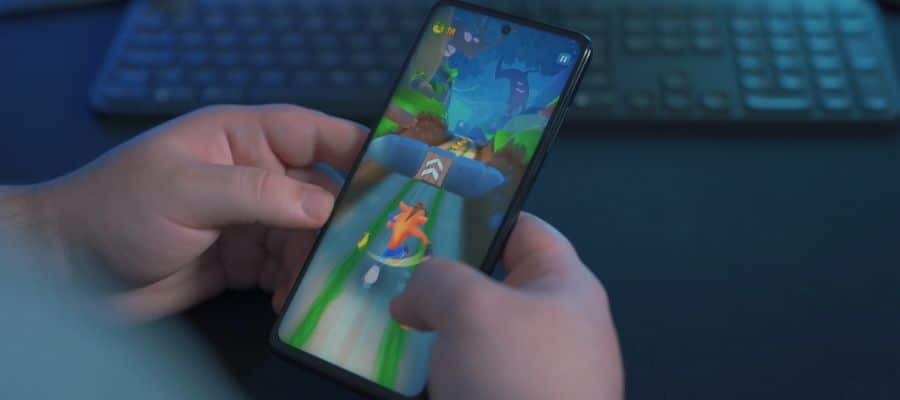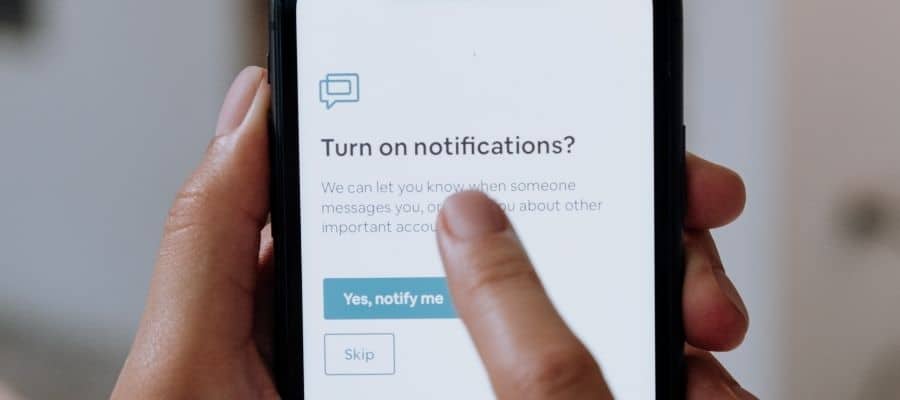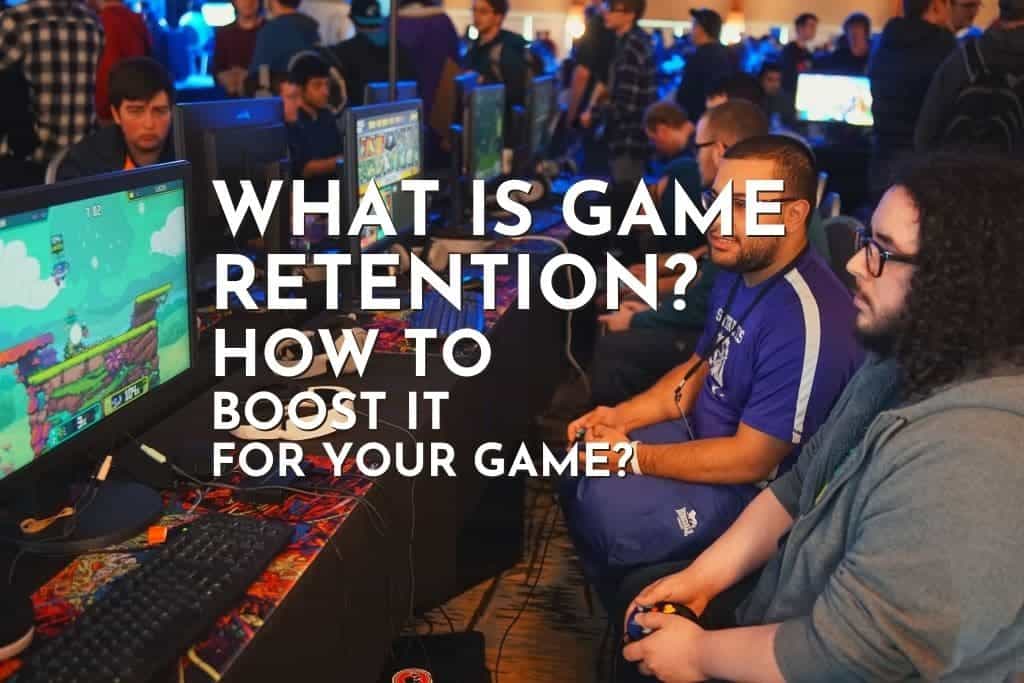As a mobile game developer, game retention is one of THE most important factors determining how successful your app becomes. Just the number of downloads doesn’t give you any meaningful information on player engagement, so you need to know how many people keep coming back to your game after the first login.
If a player doesn’t return to your game, they won’t get to experience the latest content updates, and it is less likely that you will be able to turn them into a paying customer. For any F2P game, your primary concern as a developer should be game retention because it is a great metric to predict the quality and lifetime of your game.
So, exactly what is game retention? Basically, game retention is a measure of how many people are still playing your game after a certain period of time from their first login date. For example: if 10000 people download your game today and 5700 of them are still playing tomorrow, it means you have a retention of 57 percent on day 1. If 4800 people log into the game on the 2nd day, you have a day 2 retention of 48 percent.
Pretty simple, right? Game retention is typically measured in intervals of 1 day, 1 week, and 1 month from the download date. The industry standard retention rates for F2P games are 40%, 20%, and 10% for the aforementioned time periods.
There is a lot more to it, but these are the basics. Oh, and another term you need to understand is “cohort.” Say 1000 people downloaded your new game “Ultimate Warrior” on the 2nd of March 2019. These 1000 people share a common characteristic, so we put them into a group for analytic purposes. This group is called a “cohort.”
When measuring game retention rates, we typically do so in reference to a certain cohort of users. If 660 people from this cohort of 1000 opened your game on the 3rd of March, you have a day 1 retention rate of 66 percent. People who downloaded your game on the 1st of March do not count towards this retention rate since they are from a different cohort. Here is a formula to measure “Day N” game retention
Day N retention in percentage = (Number of players who launched a game on day N)/ (Number of players who downloaded that game N days ago) x 100
To understand retention better, you need to look at its polar opposite- churn. Whereas retention gives you an idea of your active player base, churn tells you how many people never came back.
Just like retention, churn is also calculated within a specific cohort during a given period of time. The easiest way to put it is if you have 66 percent retention on day 1, it means your game has a churn rate of 34 percent on the first day. A formula exists to determine churn for any given month
Monthly churn rate in percentage = (Players who lost interest in your game this month) / (Players at the beginning of this month + New player acquisitions this month) x 100

Most of the churn takes place within the first week of players installing your app. Those who leave early typically didn’t have a nice onboarding, and they were either dissatisfied with the core game mechanic or turned off by the tutorial. If someone is still playing your game after one month, they will probably hang out much longer and convert into a paying customer at one point.
The Importance Of Game Retention

Now that you understand the basics of what game retention means and how to measure it, the next question is, “why does retention matter?”. Game retention is an extremely reliable metric for determining your app’s performance over a period of time, as well as its viability for the future. Monitoring game retention over a period of time will allow you to understand when and why your players are losing interest in the game, and you can find out flaws in your design.
Day 1 retention is all about the initial impression. This is when a player first installs your game, goes through the User Interface and tutorial. If they don’t like it on the first day, they are probably not returning anytime soon. Oftentimes, we call this experience “onboarding.” A player launches your game for the first time, understanding what it offers and getting a taste of the experience before fully exploring all features and possibilities.
Day 7 retention tells you what players think of your game in the short term after getting a proper feel for the mechanics and characters.
Day 30 retention will give you an idea of how loyal your player base is because anyone who launches the game even after a month since downloading is typically not going to leave in the near future. They are interested in the core loop of your game and have become familiar with the UI as well as graphics.
From here on, you need to push out updates and provide progression goals to keep them engaged and more likely to open up their wallets. The ideal progression route for a player should be Installation, Onboarding, Returning to the game, and Making Purchases.
Game retention also tends to be influenced by attributes such as nationality, age, and societal norms, i.e., user demographics. Players from China will desire different features from your game compared to a North American player, and their preferences are also affected by age and income.
This is why you must segment user data while carrying out cohort analysis. With proper segmentation of game retention figures, you can target the appropriate user groups with specific ads that are more suited for them.
To summarize what we’ve learned until now, game retention is useful because it influences the popularity of your game. If there is a higher chance of people sticking around, they are more likely to spread the word to their friends via physical interaction or through social media. This will make your game go viral, and even if the person doesn’t spend their own money on it, they are essentially a living ad banner for your game to bring in potential paying customers.
The goal is to keep acquiring more players than you lose each month. And even if certain players didn’t pay during the first week or month of being introduced to your game, chances are they will eventually spend on microtransactions after a couple of months or a year. This is because the time they spend on your game is directly related to the value they associate with it. The Lifetime Value of your game is a function of game retention and average revenue per daily active user (ARPDAU).
20 Tips To Improve Your Game Retention

Great, so we know what game retention is and why it’s so important. But how does all of this add up in real life? Say you are a mobile game dev, and you want to boost the profitability of your game. How do you increase game retention?
According to a Braze.com article by Todd Grennan from May 2016, around 75% of mobile app users don’t return on the day after first use. This is for all mobile apps on average, and not just games. Fortunately, game apps seem to have one of the best Day 1 retention rates, with an average of 40% of users returning the day after they first downloaded the app.
But you can improve on these figures by following the tips we are about to lay down. Our advice will help you boost game retention, increase revenue, and make the game go viral. Let’s get started-
Detect Flaws Early With A Soft Launch

Analyze the user metrics with a soft launch to get an early idea of where users leave your game. Optimize the game based on D1, D7, D14 retention data, as well as ARPDAU (Average Revenue per Daily Active User).
Also, keep an eye out for feedback during the soft launch phase; this will help you improve the game performance on devices across multiple regions on the globe.
Personalize The Experience
We like to customize our cars, clothing, and bodies, so why not do it in games? Apps that allow customization of player names, icons, character outfits, etc., have a higher chance of maintaining a loyal player base over time.
This adds an additional layer of depth to the game and increases user involvement. People feel connected with their in-game avatars on a personal level and will even spend real money to get the best cosmetics. Investing real money creates an incentive for them to keep returning in order to play your game.
First Impression is Important
First impressions set up the atmosphere for future progression when you go for a job interview or meet a date. The same is true for mobile games; if you don’t catch a player’s attention within the first 10 minutes, they are probably going to leave. Average D1 retention is between 20 to 40 percent for mobile games, and more than half of retained Day 1 users quit the app within a week.
Try to make the objective of your game clear within the first few taps. The tutorial should be intuitive but also non-mandatory, so users don’t feel locked in when they just want to get in and start playing.
To ease the process of entry even further, try to design login screens that can be skipped. Instead of forcing a Facebook or Gmail login on your players, allow them to play as guests. Don’t shove ads in their face right away; wait for the player to complete a couple of levels.
Cross-Sell Your Portfolio

Have you got multiple games on the App Store or Google Play? Try to cross-promote your games by using challenges and quests within one game to promote the others. Reward players with in-game currency or exclusive cosmetic items when they download other games from your collection.
Use Clever Advertising
Reward players for watching videos with in-game currency or upgrades. These videos can also be used to give players a taste of game progression without them having to spend real money.
Get them familiar with your game mechanics and leveling system by incentivizing video ads. The right time to play such a video is after the player just leveled up or defeated a tough boss. Limit rewarded videos to one per session; otherwise, you will degrade their value.
Use Bonuses
Most mobile gaming apps are designed for casual players who value low-time commitment and quick results. Instant gratification is one of the main reasons certain people like mobile gaming.
To take advantage of this psychological tendency, you can use “surprise” rewards for returning players. Give them a daily bounty for logging in or hand out some shiny-looking cosmetics during their very first play session. Taper off the rewards as they begin to show that they are more engaged with your game, typically after a month or so.
Don’t punish them too hard for losing focus, i.e., you shouldn’t come back and find your whole base destroyed beyond repair because you were on vacation for a couple of days. If a player loses all progression over a small period of inactivity, they will not return for the next time.
Conversely, don’t hand out freebies like it is Halloween. You will devalue the stuff being given away, and people crave that “surprise factor” which makes bonuses seem special. If everyone is getting bonuses all the time, it isn’t a bonus anymore. It is just another part of the game they will take for granted. Reward people with exclusive in-game items for spending real money, and target people who play regularly with daily challenges to keep them motivated.
Socializing is Fun

The best way to advertise your game is through the players. Give them the option to share their experience through social media platforms such as Facebook and Twitter. This will bring in new players and potentially more revenue.
Give your users the option to invite their friends directly through social media. You can even incentivize this by offering your existing players in-game currency for every friend they successfully invite.
Include Time Mechanics
Adding duration and time mechanics allows you to take what makes your game fun and increase its value artificially. All mobile games have a core gameplay loop that keeps players engaged; this is what provides enjoyment while playing the game.
For example, in a fashion design game where players have to customize and design dresses for models, you can add time walls between when you finalize your outfit and when the judges vote on it. This keeps the players curious until the last moment; they don’t know how highly the judges will rate their outfits. And, it might force them to launch the game more frequently just to check on the timer.
You can also use this as an opportunity to set up push notifications. Games such as Clash of Clans implement grind walls where you have to wait a certain period of time until your troops have finished training or a building is done upgrading. The player has a choice to make to wait or speed up the timer by spending real-world money.
Segment The Regular And Premium Customers
This ties into the customization aspect of gaming that we talked about in our first point. We take that concept a step further by giving paying players the ability to skip ads entirely. In contrast, newer players will be shown ads after every other level or 5 minutes of gameplay.
Push Notifications

What makes a player take time out of his or her daily schedule and log into your game? A sense of purpose or immediate necessity. Urgency drives engagement, and you can utilize push notifications in order to give players an immediate goal or objective that they must take advantage of. This could be a limited-time event or a message regarding some new weekly content updates.
Design your push notification such that the players know it is coming, but they don’t know what’s inside. Also, don’t spam the player with these notifications, or you are actively telling them to abandon your game. Push notifications are best used on returning players who have already shown interest in playing your game.
They can be used to inform players about content updates, how much experience they need in order to advance to the next level, or if their base is under attack from an enemy. If your game has time-delay mechanics for upgrades, you can utilize push notifications to inform players how much time is left on a certain upgrade.
Localize The Game
Players can relate better to your game if it is playable in a language that they are comfortable with. It will cost some extra money during the development process. Still, you can try to translate the UI, tutorials, push notifications, pop-up messages, etc., into various languages and give players the option to select which language they want. Some of the top languages you need to have other than English are Spanish, Portuguese, French, Arabic, etc.
Improve The Game Performance
Fans of casual and hyper-casual games don’t really like loading screens very much. Research has shown that drop-off rates start increasing after just 3 seconds of load time, so design your levels with that number in mind. Improve the game performance by designing a minimalistic, sleek UI that isn’t a resource hog.
Some parts of the world don’t have fast internet connections, and the phones in these areas are typically 2 or 3 years old, so design your game such that it can render or lower-spec hardware. Ensure that all features carry over across platforms. This ensures that players on iOS can invite their friends who are using Android to play your game without the Android players losing functionality or performance.
Implement Leaderboards

Displaying a leaderboard at the end of a play session drives social engagement and user retention through a sense of competition. Players will try to beat each others’ scores, and you can even let them challenge their friends to complete certain daily achievements.
Build a Series of Mini-Goals for Players
Goals are the single biggest factor when it comes to maintaining a high game retention rate. Without any sense of purpose, players will be wandering around confused and eventually leave your game because they got bored. But you can’t just place the primary objective right there in the beginning; you have to work towards it gradually.
Sub goals are a set of objectives that condition the primary goal. If you want to upgrade your town hall to level 6, you need X amount of materials. To get these materials, you must upgrade your resource-gathering buildings.
Reward players for progressing and punish them for lagging behind (but be careful with how you punish them). Without any subgoals, the road to the primary objective may seem impossible. But sub-goals give you the feeling that you can get there by hiding the long path behind a set of easily attainable short-term objectives.
Implement In-Game Events
Events incentivize short-term engagement, and this leads to potential long-term retention. Timed events bait players into heavily engaging with a game for a short period of time. These events may last a few hours or many days.
One way to spice things up for loyal players who have been around for a long time is by including events. A great way to reward player participation in such events is through inconsumable time-specific rewards that cannot be obtained once the event is over.
The reward must be inconsumable and untradeable to give it an aura of uniqueness. Players now have a unique new item that they get to keep even after the event is over, and this will keep them playing the game.
Incorporate a PvP Element

Consider adding a PvP mode to your game for maximum user engagement. Competition is a primal instinct that manifests itself in practically every part of our lives. We compete in school, at work, and in real-life sports. The same is what drives people to get better in games.
The presence of someone better than you at something, even if it is a video game, is enough of a motivator to get you engaged. You must play the game for hundreds of hours in order to compete at a high level, and that is exactly what keeps players from abandoning a game. A PvP mode adds extra depth to your game for free.
Don’t make it a situation where there is only one winner, and the loser gets absolutely nothing. The best players will win a disproportionately high amount of matches, and the average player will lose more often than they win. Reward players just for participating in PvP.
For example, in Clash of Clans, even when you lose a fight at an enemy village, the effect is temporary because you will eventually regain the resources spent to create troops through mining. And that is the worst-case scenario, half the time; you will at least steal a bunch of gold and elixir from the enemy’s coffers even though your army got wiped out.
Achievements And Levels
People playing games are often looking for a sense of accomplishment, and that is attained by completing objectives. Setup daily challenges and place rewards behind miniature goals.
For example- you created a 2D stunt bike game, and the user can complete a certain number of aerial flips to unlock a cool-looking helmet for their character. Or, you have a farming and base-building game in which the player is rewarded with in-game currency after mining a certain amount of minerals.
Increase the difficulty of these achievements for higher-level players to keep them engaged longer and to give them a challenge since they are already familiar with the core mechanics of your game. Design crisp-looking visual prompts to indicate that a player has completed a challenge.
Balance The Difficulty Of The Game
Setting a difficulty curve for your levels can be quite challenging. You plan for an extremely tough level 10, where the average user will fail about 3 to 4 times before advancing. But there will be players who fail 10 times on this level and eventually quit due to frustration. One way to remedy this is by auto- segmenting the worse players and dynamically lowering the difficulty for them after they fail a certain number of times.
The same can be done if a player is advancing through levels too easily; they will eventually feel bored. So you dynamically increase the difficulty for them. Dynamic difficulty reduction is usually implemented in the earlier stages of game progression, where players are trying to get familiar with the core concept of the game, and churn rates are the highest at this initial stage.
This strategy can also be implemented in games with a PvP component where players returning after a long break will be stomped by regular players. Tweak the matchmaking to pair them with lower-ranked opponents for a “fairer” fight.
Interact With The Players

Respond to user feedback on the App Store, whether it be praise or criticism for your game. Replying to comments implies that you’re listening. The players are more likely to keep using your app since they have a sense of hope that issues will be fixed and know the game is being improved continuously.
Build anticipation for upcoming updates by releasing in-game notifications or countdown timers for the next update. Maintain blog posts and give sneak peeks into future updates on your social media pages to increase the hype.
Conclusion
Have you ever heard of the saying- it’s not the number of downloads you have on your app, but how you use them? Yeah, we made that one up. But seriously, the number of downloads alone provides no real information on user engagement, and it certainly doesn’t provide any insight into the lifetime value of your app. At a certain point, the number of downloads becomes just another number with no practical purpose, a vanity metric, if you will.
Like a Youtube channel with 1 million subscribers that gets only 1000 views per video, your app will be unsustainable without retention. Even if you’re struggling with acquiring new players, a high retention rate guarantees a better chance of making money from the existing base. Keep in mind; a good retention rate doesn’t necessarily guarantee good revenue. It just increases the chance of you making more money from existing players.
For example, Clash Royale is a game with a 14th-day retention rate of just 5.7% but is still one of the top-grossing games. The answer to this anomaly is what we call “whales.” These whales makeup 1 percent of the total player base but provide over 50 percent of the net revenue.
Among all F2P performance metrics, Day 1 retention data is probably the most important. It helps you analyze the First Time User Experience (FTUE) and figure out where in the pipeline things are going wrong. To create a good first impression, the production quality is of utmost importance.
Things such as fancy graphics, creative art styles, crisp animations, and good sound design are what make a game stick in the player’s mind on their first try. This isn’t as big of a deal when it comes to long-term player retention since anybody who has stuck around for 30 days or more is probably used to your graphics, and visuals aren’t the main reason why they are still here.
But pretty things sell, and new players will recommend your game to their friends if they think it looks good. For long-term player retention, you need to focus on the metagame – progression, balance, core loop, etc.

